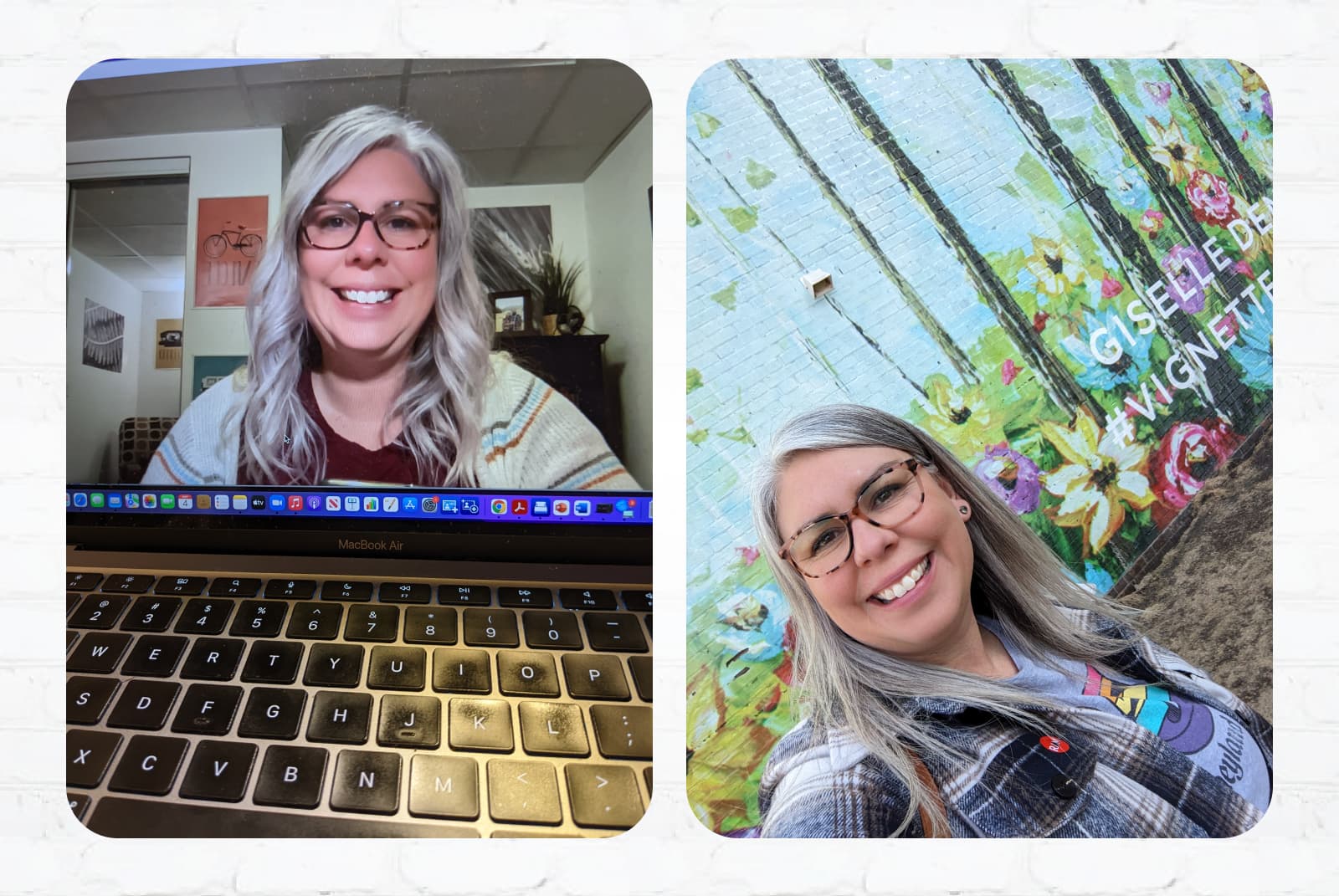Strategies for supporting middle school readers struggling with literacy

Literacy skills lay the groundwork for academic triumphs and a lifetime of learning adventures. Even though reading is so important, a considerable number of middle school students find themselves grappling with reading comprehension.
The National Assessment of Educational Progress (NAEP) showed that in 2019, about 34% of eighth-grade students in the United States reached or surpassed the proficient level in reading. This fact highlights that many students face hurdles with essential reading skills, which can profoundly influence their academic performance, self-esteem, and future opportunities.
Krysta Koppel shares 5 strategies educators can use to support middle school students struggling with literacy.
Krysta is a Literacy Coach, Online Tutor, and the founder of Engage Communication. With over 13 years of teaching experience, her mission is to help children build confidence in their reading and writing abilities in a joyful and uplifting way.
Keep reading if you're interested in helping students overcome challenges, boost their confidence, and achieve greater academic success.
1. Create a safe and inclusive learning space

A safe and supportive learning environment is the bedrock of student success, particularly for those struggling with reading comprehension. When students feel understood, valued, and respected, they are more likely to take risks in their learning journey, leading to meaningful growth and development.
Imagine a middle school classroom where every student, regardless of their reading ability, feels a sense of belonging and is eager to participate. In this nurturing environment, students with reading difficulties can share their thoughts, opinions, and experiences openly, without fear of judgment or ridicule.
To create such an inclusive and empathetic atmosphere, teachers can take the following steps:
Celebrate individual differences: Emphasize the unique strengths, perspectives, and learning styles of each student, fostering a culture of mutual respect and understanding. For example, teachers can create opportunities for students to present their work in different formats, such as writing, drawing, or speaking, to showcase their talents.
Promote empathy and understanding: Encourage students to put themselves in their classmates' shoes and appreciate the challenges they face. Teachers can incorporate activities that build empathy, such as reading books with diverse characters or engaging in role-playing exercises. These experiences help students better appreciate their peers' struggles and foster a supportive community.
Encourage open communication: Create a safe space for struggling readers to express their thoughts, feelings, and ideas without fear of judgment. Teachers can model active listening, validate students' emotions, and encourage them to ask questions and seek help. This open dialogue builds trust and allows educators to understand better and address their students' needs.
Provide constructive feedback: Focus on specific, actionable feedback that encourages improvement and growth rather than criticism. For instance, when a child struggles to decode a complex word, the teacher can guide them through the process step by step, praising her efforts and offering suggestions for improvement. This approach fosters a growth mindset and helps students with learning difficulties see challenges as opportunities.
Celebrate unique differences, promote empathy, encourage open communication and always provide constructive feedback.
2. Use multisensory teaching to maximize student potential
Multisensory instruction is a powerful approach to teaching that engages various senses simultaneously, allowing students to process and retain information more effectively. By incorporating visual, auditory, kinesthetic, and tactile methods, teachers can cater to diverse learning styles and preferences, enhancing comprehension and engagement for all students, including those who struggle with reading.
You can include graphic organizers, timelines, maps, and images that help struggling students visualize complex concepts and relationships. Videos, animations, and slideshows further enrich the learning experience, bringing history to life and reinforcing key ideas through dynamic visuals.
You can also foster a sense of camaraderie and teamwork by organizing students into small groups for collaborative projects. They can discuss their ideas, debate perspectives, and work together to synthesize information from various sources. These interactive exchanges enhance comprehension and develop critical thinking and communication skills.
To engage kinesthetic and tactile learners, you can introduce interactive games and puzzles that encourage students to participate actively in the learning process. For instance, students can work together to assemble puzzles depicting key events or reenact scenes using props and costumes. These immersive, hands-on activities help students connect with the material deeper, reinforcing their understanding and retention of key concepts.
To help struggling students, use graphics, collaborative projects, and interactive games.
3. Tailor your teaching to support each student

Each student brings unique strengths, weaknesses, and learning needs to the classroom. Differentiating techniques is like a master key that allows teachers to adapt their teaching methods and materials to cater to individual learning styles and preferences. Here are some powerful approaches to creating a transformative learning experience for students:
Offering a variety of texts and materials at different reading levels can make a world of difference for students. For example, imagine a student named Sarah who is passionate about science but struggles with complex texts.
Teachers can ensure that Sarah remains engaged and excited about learning while gradually improving her reading skills by providing her with science-related materials at an appropriate reading level. Similarly, a sports enthusiast like Jack can benefit from reading materials that tap into his interests, making reading more enjoyable and relatable.
Providing targeted instruction in small groups or one-on-one sessions allows teachers to address specific skills or concepts each student needs to work on. Take, for instance, a student who has difficulty with reading comprehension.
A teacher can work with them in a small group setting, using targeted strategies to break down complex sentences and identify main ideas. This personalized approach can help build comprehension skills while providing the support the student needs.
Implementing individualized learning plans with goals and strategies tailored to each student's needs is like designing a custom suit for their educational journey. For example, students with trouble with phonics can benefit from a learning plan focusing on explicit phonics instruction and multisensory techniques. The teacher can adjust the learning plan to ensure continued growth and development as they progress and reach specific milestones.
Offer a variety of texts and materials at different reading levels, as well as targeted instruction in small groups or one-on-one sessions.
4. Teach reading comprehension tips

Teaching reading comprehension strategies explicitly and systematically can significantly improve students' ability to understand and retain information from texts. Teachers can support this by:
Activating prior knowledge and drawing connections to personal experiences, other texts, and the world can enrich a student's understanding of a text. For example, while reading an immigration story, a student might connect the protagonist's journey to their family history or a news article they've recently read. These connections help to create a framework for understanding and relating to the material.
Encouraging students to make predictions and ask questions as they read helps to guide their reading and monitor comprehension. For instance, a teacher might pause during a read-aloud to ask, "What do you think will happen next?" or "Why do you think the character made that decision?" These questions stimulate critical thinking and ensure students remain actively engaged with the text.
Encouraging students to create mental images while they read can enhance their understanding of the material. For example, while reading a descriptive passage about a bustling city street, a teacher might ask students to close their eyes and imagine the sights, sounds, and smells they might experience if they were there. This sensory immersion helps students better comprehend and remember what they've read.
Teaching students to summarize and synthesize information enables them to identify a text's main ideas and key details. After reading a chapter in a history book, a teacher might ask students to create a timeline of events, write a summary, or engage in a group discussion to synthesize the information, they've learned. These activities help students distill complex material into digestible, memorable knowledge nuggets.
Use personal and practical examples, encourage students to create mental images of situations and summarize information.
5. Cultivate a love for reading by embracing diversity

It is essential to nurture a love for reading in students and encourage their growth as readers. Provide them with diverse high-interest, age-appropriate texts catering to various interests, cultures, and backgrounds.
By embracing diversity, choice, and exploration, educators can create an engaging and inclusive reading experience for all students. Here are some ways to bring these principles to life in the classroom:
Offer various high-interest, age-appropriate texts that allow students to find stories that resonate with their experiences and learn about other cultures and perspectives. For example, a classroom library might include books about children from various ethnic backgrounds, stories set in different countries, and nonfiction texts that explore a wide range of topics, from technology to nature. This rich array of texts helps students connect with their reading and broadens their understanding of the world.
Provide opportunities for students to explore and discuss their reading preferences and recommendations to foster community and curiosity. Teachers might facilitate book clubs or create a "book tasting" event where students can sample different genres and share their favorite titles with their peers. These activities encourage students to take ownership of their reading choices and discover new interests while building a supportive and collaborative reading culture.
Incorporate independent reading time into the daily schedule to empower students to choose their own materials and read at their own pace. By setting aside dedicated time for independent reading, teachers convey the importance of reading for pleasure and personal growth. This autonomy helps students develop intrinsic motivation to read and allows them to explore their interests without pressure or judgment.
For reluctant readers, use a visual timer and start with a short, manageable time (10 minutes), then allow a quick break before returning to read for another chunk of time. Building stamina for reading is essential for building confidence and motivation. Many just don’t have the attention span to sit and read for long periods. They need to gradually work up to it to be successful and stay engaged.
For reluctant readers, it's helpful to utilize a visual timer and begin with a brief and achievable reading duration.
Thank you, Krysta, for sharing your insights and supporting Workee!
Check out Krysta's website and Facebook for more information on her work and interests.


